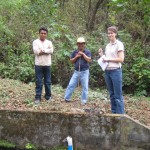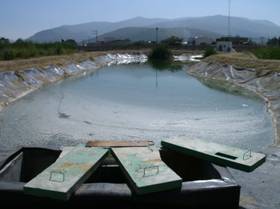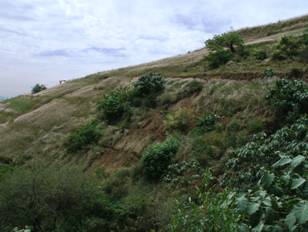Water Stories from Oaxaca, México
I know that I should have posted something earlier to this blog, in order to represent the international internship experience, but this way at least I have a larger perspective of the time here. I won’t summarize the whole Oaxaca program here, which is an ever-evolving relationship with INSO (Instituto de la Naturaleza y la Sociedad de Oaxaca), rather just my progress with the water sampling project.
First, the study that we planned involves sampling rivers and streams of the north-western section of the main watershed draining to Oaxaca’s capital city. There are eight micro-basins which we’re covering, and from each we take samples upstream, mid-stream, and downstream. From this I’ve gotten to see different towns and areas, ranging from pristine mountains above water collection facilities to sulfurous-smelling river spots near the city road. Most of the water sampled is for irrigation or animal watering, but we did get to sample some drinking water in the mountains. The really polluted places are disturbing because they are generally near the most populated areas. We also have tested wells for individuals and groups to compare to water quality standards.
Each water sample consists of a few different types of data collection, but one important bit of data is the bacterial growth we analyze. We have simple kits that can grow bacterial colonies without incubation, but for the sake of efficiency we wanted to be able to grow them faster by heating them up. Since the lab at INSO consists of the roof-top terrace and part of a hallway, a homemade incubator seemed an entirely appropriate technology. We made one out of a cardboard box with a light bulb taped to the inside, and I’m happy to say that this model reaches the target temperatures for incubation every time. Creating this was much more pleasant than analyzing the actual bacterial colonies (especially from the aforementioned nasty waters).
On the higher-tech side, we have had some issues with the physic-chemical sensors, which eventually caused us to send the equipment to Colorado for repairs. One interesting thing I did during that month-in-limbo was to help at the demonstration permaculture site for a few days. This year, Oaxaca had its rainiest rainy season on record, causing at times severe damage. The city only suffered a bit of flooding, causing road washouts and school closings, but the worst damages were in the mountain towns. This included the town with the demonstration site. I’m calling it a demonstration site because it’s been designed for tours and for teaching alternative technologies, but it’s actually a working farm which is the income source for a large family. So the one good thing about the rain damage for me was learning more about the water capitation and dirt berm designs- although the farm is designed to prevent erosion and produce sustainably on the hillsides, it takes constant work and revision.
And like everyone, I’m working on my thesis research. I’ve been looking into the waste water treatment technologies in the area, and I had the opportunity to visit the local university and see their functioning constructed wetlands treatment plant. Constructed wetlands are really interesting, which is why I decided to focus on this technology in my thesis. With only a few more weeks, I’m hoping to squeeze as much water-treatment knowledge as I can out of Oaxaca. Then back to our land of potable tap water! It has been a great experience here, and I’ll have many more stories to share.
–Robyn Glenney, Class of 2011
A site of medium water quality
Center of the constructed wetlands treatment plant- clean water filters to either side
One part of the terraced hillside that had rain damage at El Pedregal


